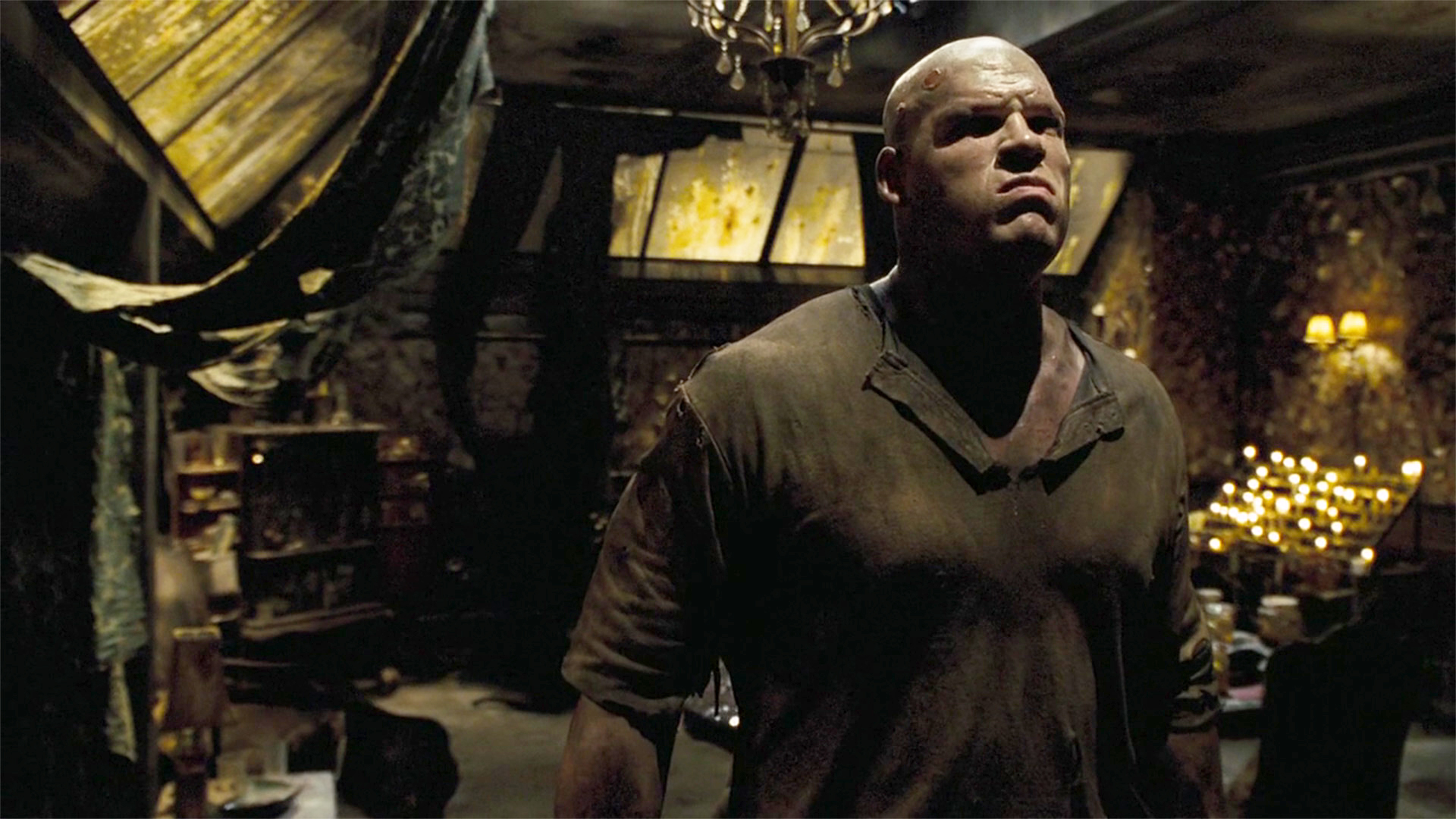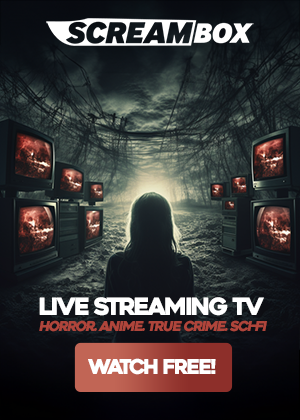Editorials
‘The Borderlands’ – Unearthing a Found Footage Hidden Gem

Before unleashing a cruel fate upon its characters — one of the worst in recent horror memory — The Borderlands leads the audience down a different path, insensibly alluding to what all lies ahead. The plot breadcrumbs of Elliot Goldner’s 2013 film are only more discernible after the fact. Until that momentous reveal, this plays out as a standard story of believers and nonbelievers investigating the religious unknown and finding more than they ever thought possible. What these unfortunate souls unearth is deeply disturbing.
Renamed Final Prayer in some parts, this British film has grown steadily in renown despite its small beginnings. Recently, Guillermo del Toro put The Borderlands on more radars; the popular filmmaker deemed it an “unknown gem.” Even before obtaining such a great endorsement, Goldner’s first feature (his only one to date) was applauded for its approach to first-person and folk-horror storytelling. More high praise: The Borderlands has been favorably compared to The Wicker Man.
Demonic possessions and exorcisms tend to go hand in hand when watching religious horror. Refreshingly, The Borderlands evades those overused elements even as the film’s backdrop predominantly features a church. Nevertheless, uninitiated viewers will suspect supernatural goings-on are in store after witnessing the prologue; a shared video clip shows the aftermath of an incident at a Brazilian shrine. Already in those first few seconds, Goldner is adept at misdirection, although the fruit of his labor is still a bit of a ways off. There are the standard formalities of these kinds of films to deal with first. Namely the introduction of the cameraperson, the purpose of visual documentation, and, of course, the mission. What brings these characters to the Devon countryside and why must their business be recorded?

Pictured: In The Borderlands, Deacon (Gordon Kennedy) prays after Father Crellick’s (Luke Neal) death.
As they say, a leap of faith can lead to miracles. For Brother Deacon (Gordon Kennedy), however, miracles have become the bane of his existence. He has lost his way ever since Brazil. Sent by the Vatican, the same man spotted in the film’s vague intro is now in charge of yet another religious inquisition: confirming the veracity of a supposed miracle inside a rural church. Joining Deacon are an agnostic tech expert, Gray Parker (Robin Hill), and the rather inflexible Father Mark Amidon (Aidan McArdle). Footage of objects mysteriously moving during a christening is supported by local priest Father Crellick (Luke Neal), but Deacon and his team are, needless to say, skeptical.
Compensating for an implausible situation is the film’s grounded setup. And at the core of this out-there story are these two mismatched characters who, individually, feel like they were plucked out of real life. Intense and weary Deacon would probably never find himself in long conversation with layman Gray, a babbling goofball, had they not been assigned to work together. That being said, there is a terrific amount of chemistry between these men with opposite life experiences. Their convincing on-screen fellowship, not to mention an ability to meet one another halfway, sells everything. Especially the film’s outcome.
Something The Borderlands implements early on — and other found-footage auteurs should take note of — is assigning cameras to more than one character. This allows for a variety of angles and views, much like in a traditionally shot production, without losing the immediacy and intimacy of the first-hand perspective. The director also does not have to resort to inorganic tactics to ensure every moment is captured on video. Another general gripe with the found-footage format is the valid question of why characters never drop their recording devices when in peril, or why they always happen to have a cam available when anything weird occurs. Here the simple fix of wearable cameras makes a world of difference. Particularly once it comes time for the big reveal at the end. Staying so fixed and unflinching on the characters’ agony is more believable now.

Pictured: Deacon (Gordon Kennedy) and Gray (Robin Hill) crawl toward their cruel fate in The Borderlands.
The horror genre’s long history of questioning, challenging and corrupting people’s faith has certainly yielded a wealth of shocks over the years. However, The Borderlands stands alone in the realm of religious horror, due in large part to its uniquely dreadful conclusion. In lieu of a conventional finisher, Goldner pulls the rug out from under everyone and delivers a tremendous ending. The kind that stays with audiences for years to come. What goes down in that final act is as impossible to unlearn and unsee as it is brilliant. The film, in hindsight, portends Deacon and Gray’s fate, but it did so with whispers.
The Borderlands dangles significant clues in front of the audience without them realizing it. The setting’s undeniable sense of unease acts as a smokescreen of sorts; Goldner persuasively establishes how the imminent danger goes far beyond the church grounds, all while throwing everyone off the scent of the real evil here. From local youths setting a live sheep on fire to the sudden suicide of a supporting character, the story has these startling moments that undermine its overall slow-burn quality. And just as the film starts to feel at odds with itself, those pieces finally fall in place and create a bigger picture. Understanding how, though, requires going back and picking up on the considerable indicators (both visual and verbal) from earlier. This scrutiny only makes future rewatches more satisfying.
If The Borderlands aimed to harm viewers on an emotional level, it succeeded with flying colors. Elliot Goldner set up what looked to be a traditional tale of religious horror, only to then lead unsuspecting audiences elsewhere. He took them down a dark passageway and left them trapped with just their raw feelings after witnessing such a horrific sight. This film is indeed recognized for its devastating closing minutes, yet the outstanding storytelling before that point, along with impressive performances from the two lead actors, should not be overlooked.
Since its original release, The Borderlands has gotten lost in the horror shuffle and gone unnoticed by the masses. Once experienced, however, the film becomes an instant reward for found-footage enthusiasts; the ones who comb through the divisive subgenre’s catalogue in search of that one elusive and worthwhile treasure.
The Borderlands is now available on a new limited edition Blu-ray from Second Sight Films.
Horrors Elsewhere is a recurring column that spotlights a variety of movies from all around the globe, particularly those not from the United States. Fears may not be universal, but one thing is for sure — a scream is understood, always and everywhere.

Pictured: Poster for The Borderlands.

Books
‘See No Evil’ – WWE’s First Horror Movie Was This 2006 Slasher Starring Kane

With there being an overlap between wrestling fans and horror fans, it only made sense for WWE Studios to produce See No Evil. And much like The Rock’s Walking Tall and John Cena’s The Marine, this 2006 slasher was designed to jumpstart a popular wrestler’s crossover career; superstar Glenn “Kane” Jacobs stepped out of the ring and into a run-down hotel packed with easy prey. Director Gregory Dark and writer Dan Madigan delivered what the WWE had hoped to be the beginning of “a villain franchise in the vein of Jason, Freddy and Pinhead.” In hindsight, See No Evil and its unpunctual sequel failed to live up to expectations. Regardless of Jacob Goodnight’s inability to reach the heights of horror’s greatest icons, his films are not without their simple slasher pleasures.
See No Evil (previously titled Goodnight and Eye Scream Man) was a last gasp for a dying trend. After all, the Hollywood resurgence of big-screen slashers was on the decline by the mid-2000s. Even so, that first Jacob Goodnight offering is well aware of its genre surroundings: the squalid setting channels the many torturous playgrounds found in the Saw series and other adjacent splatter pics. Also, Gregory Dark’s first major feature — after mainly delivering erotic thrillers and music videos — borrows the mustardy, filthy and sweaty appearance of Platinum Dunes’ then-current horror output. So, visually speaking, See No Evil fits in quite well with its contemporaries.
Despite its mere setup — young offenders are picked off one by one as they clean up an old hotel — See No Evil is more ambitious than anticipated. Jacob Goodnight is, more or less, another unstoppable killing machine whose traumatic childhood drives him to torment and murder, but there is a process to his mayhem. In a sense, a purpose. Every new number in Goodnight’s body count is part of a survival ritual with no end in sight. A prior and poorly mended cranial injury, courtesy of Steven Vidler’s character, also influences the antagonist’s brutal streak. As with a lot of other films where a killer’s crimes are religious in nature, Goodnight is viscerally concerned with the act of sin and its meaning. And that signature of plucking out victims’ eyes is his way of protecting his soul.

Image: The cast of See No Evil enters the Blackwell Hotel.
Survival is on the mind of just about every character in See No Evil, even before they are thrown into a life-or-death situation. Goodnight is processing his inhumane upbringing in the only way he can, whereas many of his latest victims have committed various crimes in order to get by in life. The details of these offenses, ranging from petty to severe, can be found in the film’s novelization. This more thorough media tie-in, also penned by Madigan, clarified the rap sheets of Christine (Christina Vidal), Kira (Samantha Noble), Michael (Luke Pegler) and their fellow delinquents. Readers are presented a grim history for most everyone, including Vidler’s character, Officer Frank Williams, who lost both an arm and a partner during his first encounter with the God’s Hand Killer all those years ago. The younger cast is most concerned with their immediate wellbeing, but Williams struggles to make peace with past regrets and mistakes.
While the first See No Evil film makes a beeline for its ending, the literary counterpart takes time to flesh out the main characters and expound on scenes (crucial or otherwise). The task requires nearly a third of the book before the inmates and their supervisors even reach the Blackwell Hotel. Yet once they are inside the death trap, the author continues to profile the fodder. Foremost is Christine and Kira’s lock-up romance born out of loyalty and a mutual desire for security against their enemies behind bars. And unlike in the film, their sapphic relationship is confirmed. Meanwhile, Michael’s misogyny and bigotry are unmistakable in the novelization; his racial tension with the story’s one Black character, Tye (Michael J. Pagan), was omitted from the film along with the repeated sexual exploitation of Kira. These written depictions make their on-screen parallels appear relatively upright. That being said, by making certain characters so prickly and repulsive in the novelization, their rare heroic moments have more of an impact.
Madigan’s book offers greater insight into Goodnight’s disturbed mind and harrowing early years. As a boy, his mother regularly doled out barbaric punishments, including pouring boiling water onto his “dangling bits” if he ever “sinned.” The routine maltreatment in which Goodnight endured makes him somewhat sympathetic in the novelization. Also missing from the film is an entire character: a back-alley doctor named Miles Bennell. It was he who patched up Goodnight after Williams’ desperate but well-aimed bullet made contact in the story’s introduction. Over time, this drunkard’s sloppy surgery led to the purulent, maggot-infested head wound that, undoubtedly, impaired the hulking villain’s cognitive functions and fueled his violent delusions.

Image: Dan Madigan’s novelization for See No Evil.
An additional and underlying evil in the novelization, the Blackwell’s original owner, is revealed through random flashbacks. The author described the hotel’s namesake, Langley Blackwell, as a deviant who took sick pleasure in defiling others (personally or vicariously). His vile deeds left a dark stain on the Blackwell, which makes it a perfect home for someone like Jacob Goodnight. This notion is not so apparent in the film, and the tie-in adaptation says it in a roundabout way, but the building is haunted by its past. While literal ghosts do not roam these corridors, Blackwell’s lingering depravity courses through every square inch of this ill-reputed establishment and influences those who stay too long.
The selling point of See No Evil back then was undeniably Kane. However, fans might have been disappointed to see the wrestler in a lurking and taciturn role. The focus on unpleasant, paper-thin “teenagers” probably did not help opinions, either. Nevertheless, the first film is a watchable and, at times, well-made straggler found in the first slasher revival’s death throes. A modest budget made the decent production values possible, and the director’s history with music videos allowed the film a shred of style. For meatier characterization and a harder demonstration of the story’s dog-eat-dog theme, though, the novelization is worth seeking out.
Jen and Sylvia Soska, collectively The Soska Sisters, were put in charge of 2014’s See No Evil 2. This direct continuation arrived just in time for Halloween, which is fitting considering its obvious inspiration. In place of the nearly deserted hospital in Halloween II is an unlucky morgue receiving all the bodies from the Blackwell massacre. Familiar face Danielle Harris played the ostensible final girl, a coroner whose surprise birthday party is crashed by the resurrected God’s Hand Killer. In an effort to deliver uncomplicated thrills, the Soskas toned down the previous film’s heavy mythos and religious trauma, as well as threw in characters worth rooting for. This sequel, while more straightforward than innovative, pulls no punches and even goes out on a dark note.
The chances of seeing another See No Evil with Kane attached are low, especially now with Glenn Jacobs focusing on a political career. Yet there is no telling if Jacob Goodnight is actually gone, or if he is just playing dead.

Image: Katharine Isabelle and Lee Majdouba’s characters don’t notice Kane’s Jacob Goodnight character is behind them in See No Evil 2.













You must be logged in to post a comment.